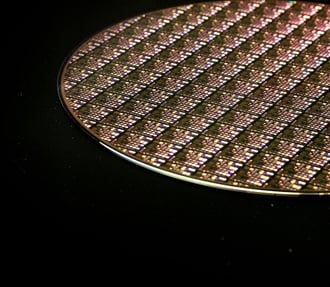How to measure mechanics of single cells

06.11.2024
The ultimate tool for nanoscale research from biological molecules to advanced new materials.
The versatile mid-range research AFM that grows with your demands in modes and accessories.
A compact affordable research AFM that is astoundingly easy to use, with more than 30 modes and options.
Measure roughness and other material properties of heavy and large samples up to 300 mm and 45 kg.
Bringing the power of DriveAFM to a wafer metrology system purpose-built for the requirements of the semiconductor industry.
For unique requirements, we will design a bespoke AFM solution, leveraging our decades of engineering expertise.
Slide an AFM onto your upright optical microscope turret for a leap in resolution.
One of the smallest ever AFMs, created for integration into custom stages or existing setups.
A flexibly mountable research-grade scan head for integration into custom stages or existing set ups.
What is atomic force microscopy (AFM)? How does AFM work? What AFM modes do I really need? How do I get started with AFM?
Learn how AFM works with cantilever/tip assembly interacting with the sample. Explore CleanDrive technology, calibration methods, and feedback principles for precise nanoscale imaging.
An overview of common AFM modes. To learn about each mode in more detail and see application, view the full article.
We regularly publish detailed reviews providing practical guidance and theoretical background on various AFM applications.
Read detailed technical descriptions about selected AFM techniques and learn how to perform specific measurements on Nanosurf instruments.
A library of links to research papers in which Nanosurf instruments were used.
Learn AFM from our library of recorded webinars, covering different measurement techniques, modes, and areas of application.
Short video clips explaining how to perform different operations on Nanosurf instruments.
Watch a product demonstration to learn about the capabilities of our AFMs.
Short videos of our AFMs.
Browse news articles, press releases and a variety of other articles all around Nanosurf.
Browse Héctor Corte-Léon's weekly experiments, for inspiration, entertainment, and to discover everyday applications of AFM.
Nanosurf just released a new application note, "Enhancing Piezoresponse Force Microscopy with Dual-Frequency-Resonance-Tracking: A Practical Guide”.
In the app note we dive deep into the fascinating world of piezoelectric materials. Leveraged in a broad spectrum of applications, including biomedical devices, advanced electronics, energy production and storage, and MEMS, these materials possess the ability to generate an internal electric field when subjected to mechanical stress, and conversely, to demonstrate mechanical strain when an electric field is applied. These unique properties form the cornerstone of various devices operating on piezoelectric effects.
The application note summarizes how traditional PFM techniques work. While efficient, these standard techniques often yield a relatively weak signal, requiring the application of high AC excitation voltage which can potentially influence the local polarization and inadvertently switch its direction.
Dual-Frequency-Resonance-Tracking (DFRT) was introduced to circumvent these challenges. This method enhances the signal strength by applying AC excitation at the contact resonance (CR) frequency, thereby amplifying the piezoelectric response. A detailed walkthrough of the DFRT setup and its operation shows how the technique optimizes the excitation frequencies and maintains them at a constant level. This translates into a high-fidelity PFM imaging process, minimal crosstalk with the surface topography, and alleviates the need for manual retuning of resonant frequency under changing conditions.
The application note illustrates the advantages using examples of DFRT-PFM measurements on a thin film of BaTiO3, the first polycrystalline ceramic material discovered to exhibit ferroelectricity. Detailed figures illustrate the sample topography, followed by a comprehensive depiction of the DFRT-PFM imaging process. It also shows ferroelectric switching using a box-in-box pattern, and arbitrary-pattern PFM lithography.
An important section of the note discusses the considerations for applying the voltage, bringing out the different outcomes when the excitation signal is applied to the sample or the probe. It underscores the importance of conducting PFM measurements in both ways to discern potential artifacts.
 Topography of the BaTiO3 sample.
Topography of the BaTiO3 sample.
With a mix of theoretical insights and practical applications, this guide serves as an invaluable resource for researchers working with piezoelectric materials, aiming to streamline their work by leveraging the power of DFRT PFM.
Download the full application note PDF today to learn more about DFRT PFM.

06.11.2024
How to measure mechanics of single cells

22.10.2024
Discover how Atomic Force Microscopy (AFM) is revolutionizing industries by providing unparalleled insights into ...

09.09.2024
Explore the strengths and limitations of Atomic Force Microscopy (AFM), Scanning Electron Microscopy (SEM), and ...

08.12.2024
Learn how to make a Python code to interface your AFM with a gamepad.

01.10.2024
FridayAFM: learn how the extreme sensitivity of AFM can reveal the glass ageing process.

11.07.2024
FridayAFM: learn how to perform datamining on large sets of AFM data.
Interested in learning more? If you have any questions, please reach out to us, and speak to an AFM expert.
